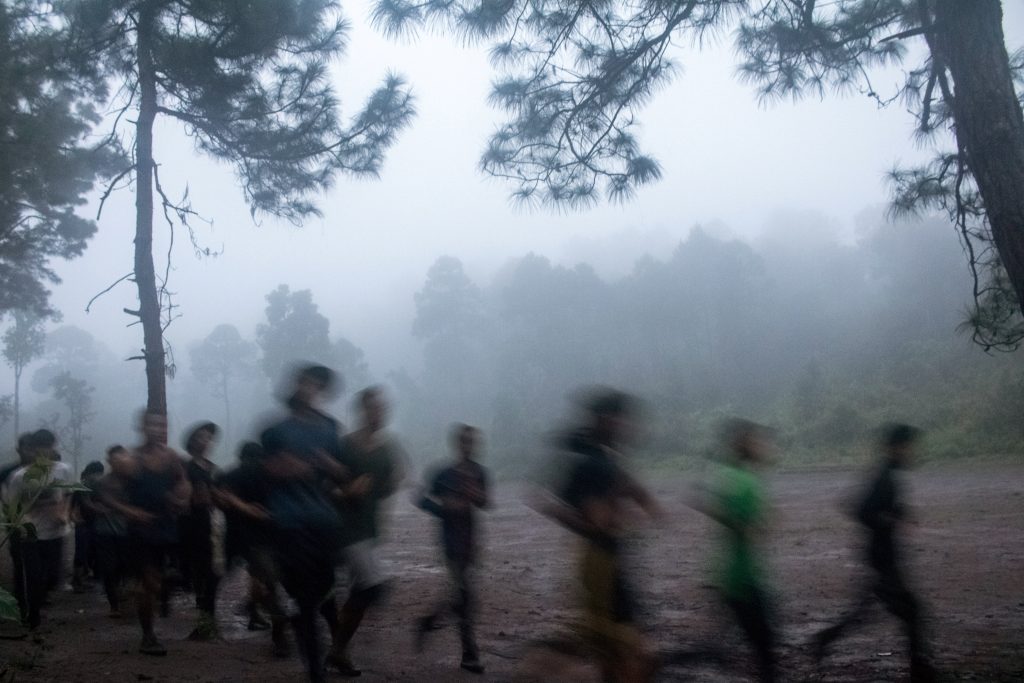
More than two dozen Myanmar civilians died at the hands of militias supporting and opposing the country’s military rulers by mid-December, the highest number recorded in a single month since the junta took control of the government in a Feb. 1 coup, observers and rights activists said.
Many of those who died between Dec. 1-17 were believed to be informers for the other side. Some lost their lives during massacres in Sagaing and Mandalay regions and in northern Shan state, where the strongest opposition to the junta exists.
Myanmar has been in a state of turmoil since the military seized power from the elected government in a Feb 1 coup. Regime forces have killed 1,365 civilians and arrested 11,148 since February, mostly during nonviolent protests against the coup, according to the Bangkok-based Assistance Association for Political Prisoners.
The latest tally of civilian deaths at the hands of militias include eight villagers taken from their homes in Sagaing’s Shwebo township by unknown gunmen, handcuffed and hanged outside their village on Dec. 9, residents said.
The military junta said that the villagers had been killed by members of a local branch of the People’s Defense Force (PDF), the armed wing of the National Unity Government, which says it is the legitimate government of Myanmar.
But residents told RFA that the villagers were killed by the military-affiliated Pyu Saw Htee militia, not by PDF members.
Kayjay, a resident of Shwebo, said it was clear from the scene of the massacre that the killings were not the work of the local PDF. Prior to the coup, residents who were members of country’s two main political parties — the National League for Democracy, known colloquially as the Reds, and the military-backed Union Solidarity and Development Party, referred to as the Greens — were able to live together despite political differences, he said. But the situation now has changed.
“There has been a complete split between the Greens who support the junta dictators and the Reds who support democracy for the people,” Kanjay said. “After the split, there were killings carried out by whoever had the first opportunity.”
Boh Naga, the PDF leader in Sagaing’s Pale township, justified killing civilians who operate as dalan, or informers, for the junta.
“Sometimes you have to get rid of a few in order to serve the majority,” he said. “Some are killing others out of selfish interests. Some are weeding out a few for the good of the many. In such a situation, we need to get rid of a few in order to benefit the masses.”
In November, junta forces killed and injured residents and torched homes in Kalay’s Inchun village in Sagaing, locals said.
Pyu Saw Htee informants in Kalay identified PDF members and sympathizers who were then pursued and killed by police and soldiers, the sources said. Members of the PDF meanwhile have also killed ward and village administrators in Kalay who were said to be informants to the junta, locals said.
Civilians believe there is no rule of law and that the military can easily kill people without consequence, said Maung, a Kalay resident.
“At present, there are no laws here. It is lawless,” he said. “We all have to exercise great care in our speech and actions. If we say something wrong, we could get killed.”
A video of a massacre of 10 people by junta soldiers who set up camp near Done Taw village in Sagaing’s Salingyi township went viral on social media on Dec 7.
Village residents have confirmed the incident. The junta has denied the allegation.
The government said on Dec. 17 that a man and four women were killed by PDF groups in Dauntgyi village in Sagaing’s Taze township. Junta spokesman Maj. Gen. Zaw Min Tun said those killed were ordinary people, not informants for the military. He denied the Pyu Saw Htee’s existence.
“Ordinary people and people who do not support the [PDF] are often killed,” he said. “There are allegations that the army did the killings after they had killed each other. The allegations about Pyu Saw Htee were not true. There is no such group called Pyu Saw Htee.”
Other civilians killed include Arkar Phyo and his wife, Chan Mya Nyein, who were shot dead while riding a motorbike on Dec. 12 in front of a hospital in Chanmya Tharzi township in Mandalay region.
According to CCTV footage, the two were shot at close range. The junta blamed the local PDF for the killings and said that some members had been arrested within 24 hours after the incident.
Dr. Wint Wint Myaing, director of the Kutkai Township People’s Hospital in northern Shan state, was shot dead by gunmen on Dec. 14 between the township’s ward No. 7 and Naung Cho village. The junta said it was the work of an insurgent group but did not say which one.
Ye Tun, a political analyst and former lower house lawmaker from Hsipaw township in Shan state, said the security situation in the country has devolved into chaos.
“We cannot live together anymore now,” he told RFA. “It’s as if neither side no longer trusts the other. In the current situation, if he has the chance, he will kill me first or the other way around. So this is very dangerous.”
Copyright © 1998-2020, RFA. Used with the permission of Radio Free Asia, 2025 M St. NW, Suite 300, Washington DC 20036. https://www.rfa.org
Source: Licas Philippines
0 Comments